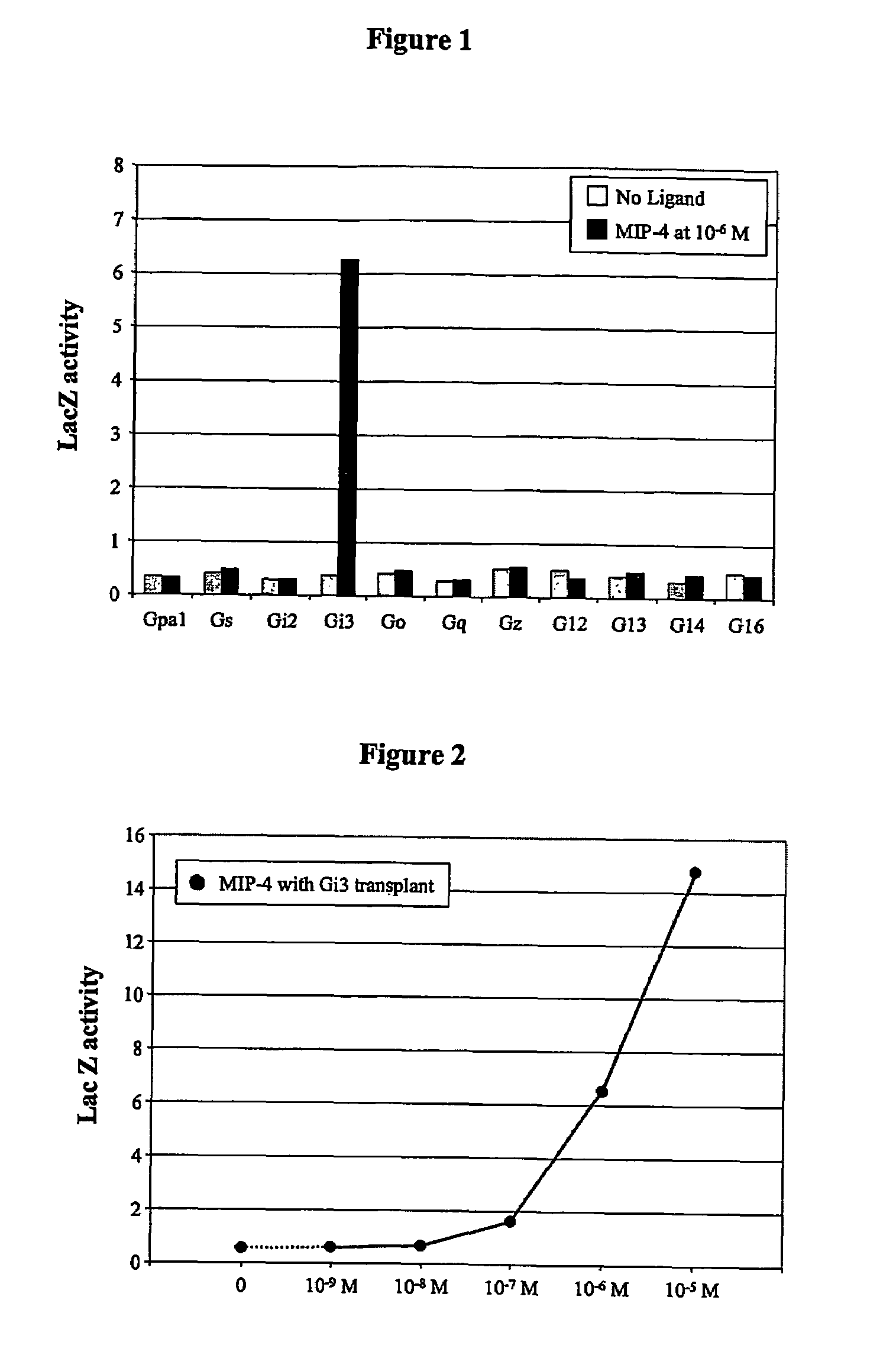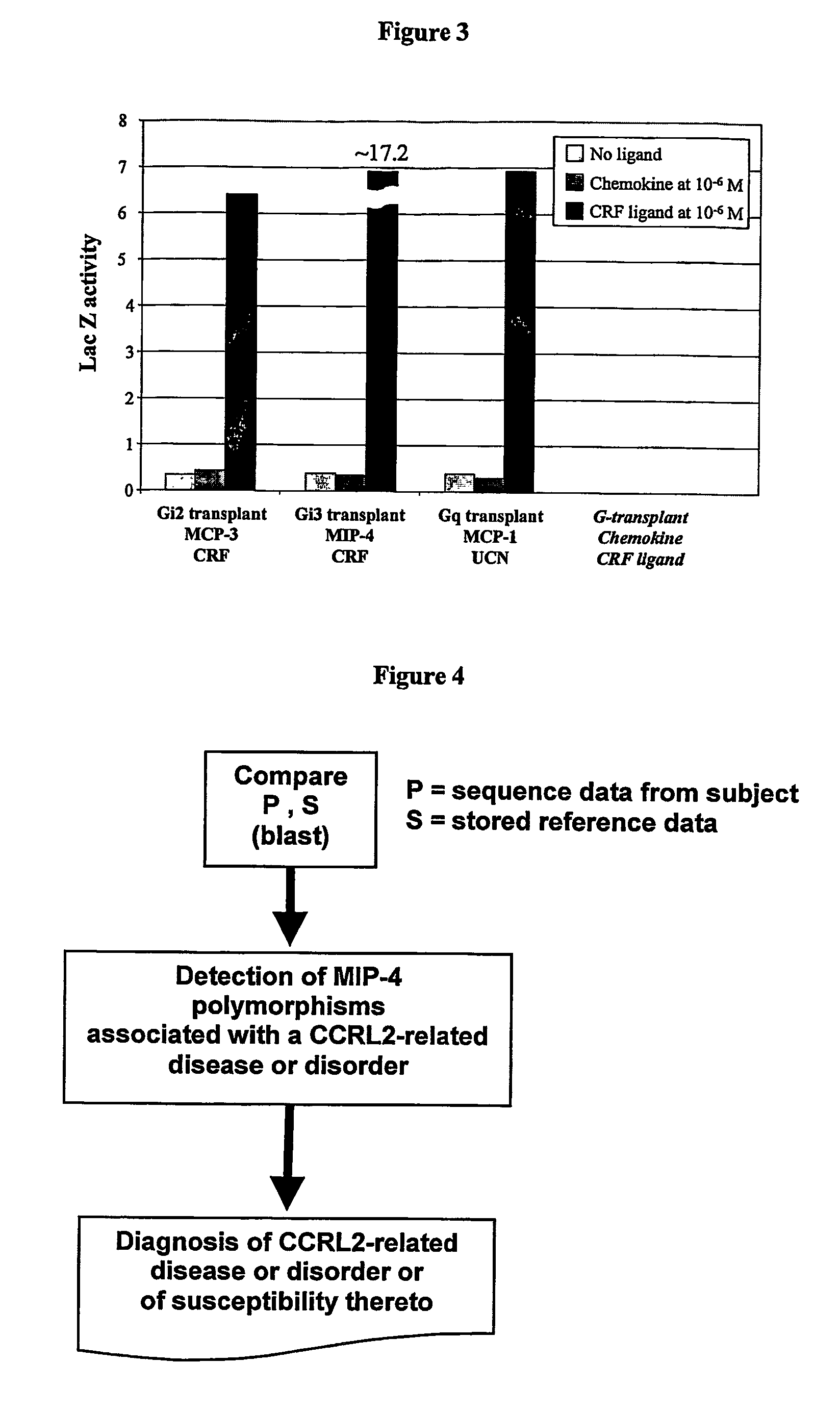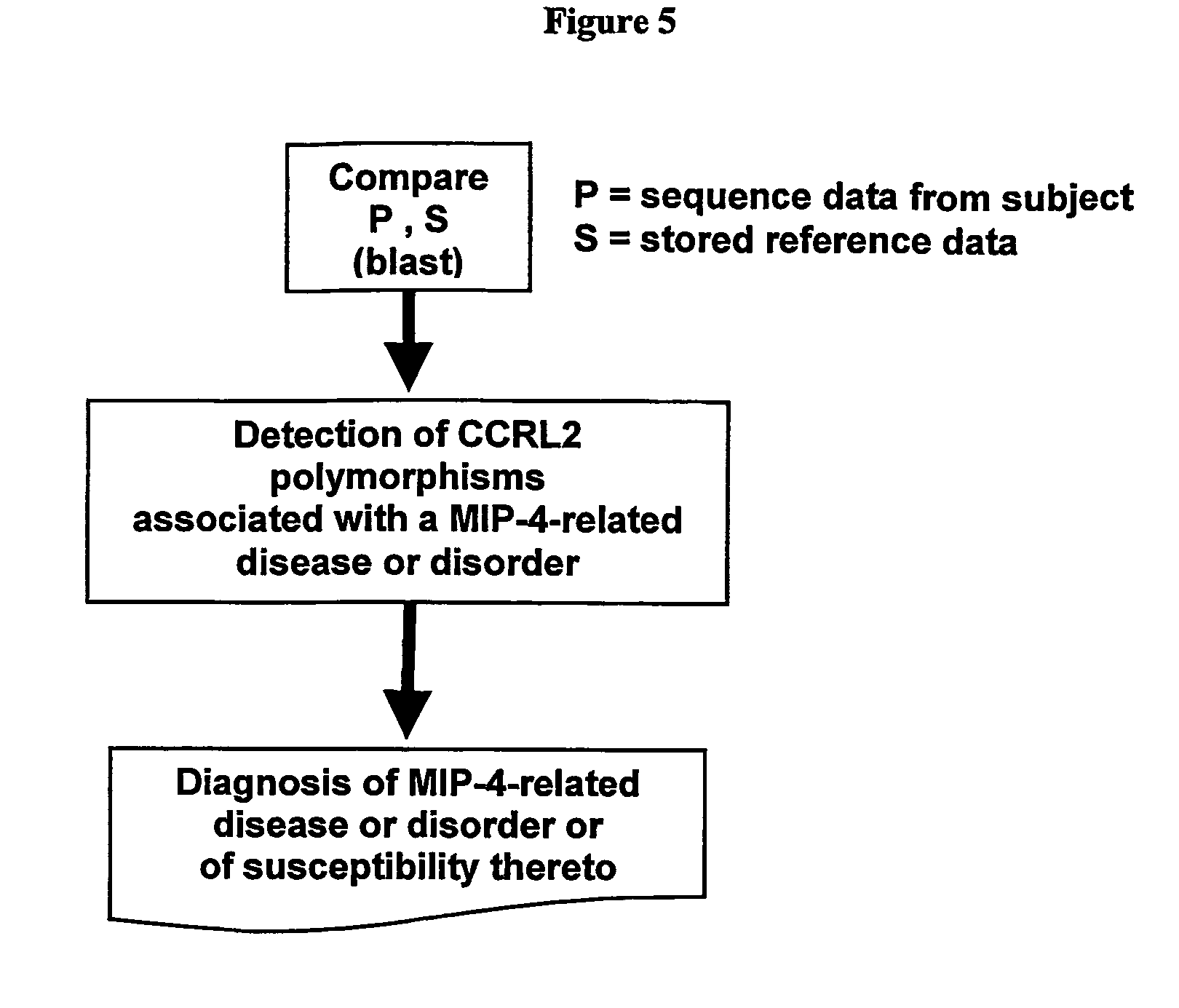Method for detection of MIP-4 and CCRL2 binding and activity modulating agents
a technology of ccrl2 and binding site, which is applied in the field of endogenous ligands for orphan g protein coupled receptors, can solve the problems that the importance of ccrl2 in human inflammatory diseases has not been investigated
- Summary
- Abstract
- Description
- Claims
- Application Information
AI Technical Summary
Benefits of technology
Problems solved by technology
Method used
Image
Examples
example 1
CCRL2 Signalling Assays
Yeast Strains
[0224]Yeast strains were constructed as described in Ladds et al., Molecular Microbiology, 2003; 47(3), 781-792.
Yeast Assays
[0225]All assays were performed by Septegen's standard protocols (Ladds et al., Molecular Microbiology, 2003; 47(3), 781-792). Yeast strains were incubated with ligand for 16 hours prior to assaying LacZ activity.
CCRL2 Activity in the Presence of MIP-4
[0226]MIP-4 was received from R&D Systems and stored at −20° C. until use. MIP-4 was dissolved in growth medium containing 0.1% BSA to provide a stock solution of 11.1 μM (50 μg of chemokine in final volume of 577 μl). For the initial screen of the G-protein transplant strains, 210 μl of the 11.1 μM stock was diluted to a final volume of 2.1 ml to give a working concentration of 1.11 μM.
[0227]For each of the G-transplant strains, 180 μl of 1.11 μM solution was added to 20 μl of cells. The final assay volume was 200 μl and the final concentration of MIP-4 was 1 μM. MIP-4 activate...
example 2
CCRL2 Chemotaxis Assays
[0231]An 8 μm-pore sized 96-well ChemoTx plate (Neuroprobe) was pre-coated with 10 μg / ml fibronectin. Transfected cells were fluorescently-labeled with 5 μg / ml calcein (Molecular Probes) for 30 min at 37° C. 25 μl of cells at a density of 3×106 cells / ml and test samples (29 μl) prepared in appropriate media were applied to the upper and lower chambers of the ChemoTx plate. After incubation at 37° C. for 5 h, any cells remaining on top of the filter were removed by EDTA-treatment and the migrated cells on the underside of the filter and in the wells were quantitated in a fluorescent plate reader (Perkin Elmer). The results are shown in FIG. 6.
[0232]MIP-4 stimulated chemotaxis of cells transfected with the short form of CCRL2 (CRAM-B). MIP-4 had no effect on cells that were not transfected with the short form of CCRL2 (CRAM-B).
[0233]MCP-1 and MCP-3 which activated the short form of CCRL2 in the yeast assay also showed activity in the chemotaxis a...
example 3
AntiCCRL2 Antibody Blocking of MIP-4 Induced Monocyte Chemotaxis
Monocyte Isolation and Culture
[0234]Human monocytes were purified (>85%) from buffy coat using an indirect labelling strategy (Monocyte Isolation kit II, Miltenyi Biotech) and cultured for 5 days in RPMI 1640 supplemented with 10% FCS.
Chemotaxis Assay
[0235]Cultured monocytes were tested for chemotactic competence using 96-well chemotaxis chambers (HTS Fluroblok™, BD Falcon). Cultured monocytes were pre-labelled with 5 ng / ml Calcein AM (Molecular Probes) for 30 min at 37° C., washed in PBS, then 3×104 cells (6×105 cells / ml) added to the top chamber. 10 nM of the test chemokine (R&D Systems) was added to the bottom chamber and the chemotaxis plate incubated at room temperature for 10 minutes prior to data collection using a Victor2 fluorometer (Perkin Elmer). All samples were run in triplicate.
Blocking Chemotaxis with Anti-CCRL2 Antibody
[0236]Anti-CCRL2 antibodies were obtained from R&D Systems. For antibody blocking expe...
PUM
| Property | Measurement | Unit |
|---|---|---|
| volume | aaaaa | aaaaa |
| volume | aaaaa | aaaaa |
| volume | aaaaa | aaaaa |
Abstract
Description
Claims
Application Information
 Login to View More
Login to View More - R&D
- Intellectual Property
- Life Sciences
- Materials
- Tech Scout
- Unparalleled Data Quality
- Higher Quality Content
- 60% Fewer Hallucinations
Browse by: Latest US Patents, China's latest patents, Technical Efficacy Thesaurus, Application Domain, Technology Topic, Popular Technical Reports.
© 2025 PatSnap. All rights reserved.Legal|Privacy policy|Modern Slavery Act Transparency Statement|Sitemap|About US| Contact US: help@patsnap.com



